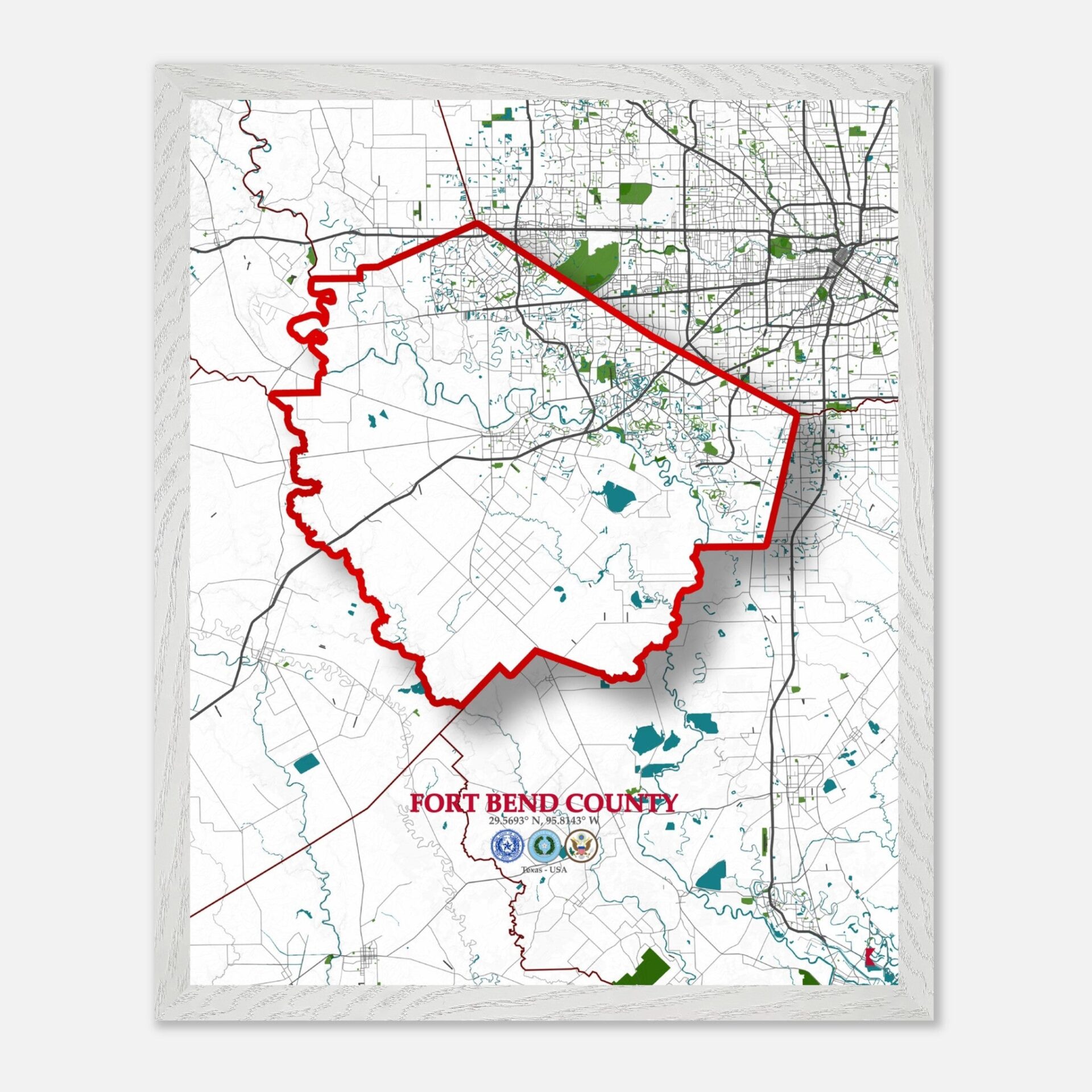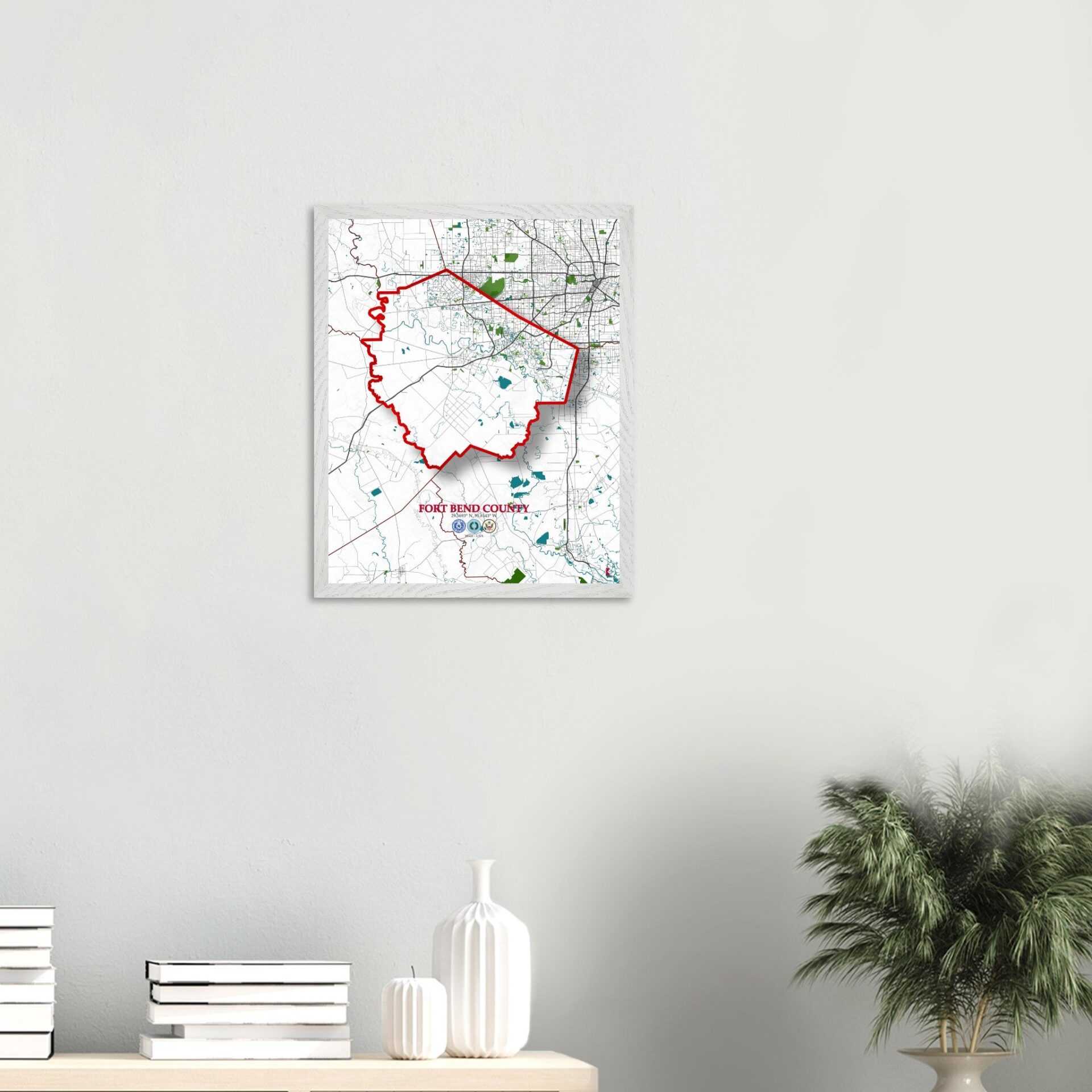Fort Bend County Map: A Guide to Texas’ Dynamic Region
Fort Bend County, located in southeastern Texas, is a vibrant and diverse area known for its rich history and rapid growth. Nestled between Harris County to the north and Brazoria County to the south, Fort Bend County serves as a key part of the Houston metropolitan area.
The county is bordered by Waller County to the northwest and Galveston County to the southeast, placing it in a prime location for both economic development and historical exploration.
Historically, Fort Bend County is renowned for its significant sites such as the George Ranch Historical Park and the Fort Bend Museum. These landmarks provide a window into the area’s past, highlighting the county’s role in Texas’ early settlement and its development over the years.
The George Ranch Historical Park, for instance, offers visitors a glimpse into the life of early Texas settlers, while the Fort Bend Museum showcases artifacts and stories from the county’s storied history.
In terms of economy, Fort Bend County boasts a diverse range of industries, including healthcare, education, and manufacturing.
The presence of major employers like the Fort Bend Independent School District and the Texas Medical Center underscores the county’s strong economic foundation. The county’s growing business environment is further supported by its strategic location along major transportation routes, contributing to its economic dynamism.
With a population exceeding 850,000 and an area of approximately 886 square miles, Fort Bend County stands as one of the most populous and expansive counties in Texas.
The county’s growth has been driven by both its economic opportunities and its appealing residential communities, making it a desirable location for families and businesses alike.
Fort Bend County’s geographical and cultural diversity is reflected in its urban and rural landscapes, offering a blend of historical charm and modern amenities.
Fort Bend County – The Balance Between Past And Present
Connecting Residents And Businesses

Fort Bend County’s extensive network of highways and avenues facilitates connectivity within the county and to neighboring areas. Major highways include Interstate 69 (I-69), which provides a crucial link between Fort Bend County and Houston, as well as U.S. Highway 90A, which runs through several key towns in the county.
State Highway 6 and the Grand Parkway (State Highway 99) also play significant roles in the county’s transportation infrastructure, connecting residents and businesses to broader regional and national routes.
It’s Predominantly Flat To Gently Rolling Terrain

The topography of Fort Bend County is characterized by its predominantly flat to gently rolling terrain. The county is part of the Gulf Coastal Plain, featuring low-lying areas with occasional small hills and gentle slopes.
Notable landforms include the Brazos River, which traverses the county and contributes to its diverse landscape. The region’s relief is generally smooth, with elevation changes that are subtle but significant in defining local land use and development.
It’s Commitment To Environmental Preservation

Fort Bend County is home to several parks and natural reserves that highlight its commitment to environmental preservation. The Brazos Bend State Park, one of the county’s most notable green areas, features diverse vegetation, including hardwood forests and wetlands.
The park provides habitat for various wildlife species and is a popular spot for birdwatching. The county’s climate is classified as humid subtropical, with warm summers and mild winters, contributing to a rich array of flora and fauna throughout the year.
It’s Ecological And Economic Landscapes

The county’s water resources are integral to its ecological and economic landscapes. The Brazos River, a major waterway, flows through the county and serves as a vital resource for irrigation and recreation. Additionally,
Fort Bend County features several smaller lakes and reservoirs that provide drinking water and recreational opportunities for residents. These water bodies play a crucial role in supporting local ecosystems and enhancing the quality of life within the county.
Fort Bend County Map – TX: A Window into a Thriving Region
| City | Population | Area (sq mi) |
| Sugar Land | 118,373 | 29.0 |
| Richmond | 15,683 | 28.2 |
| Katy | 24,575 | 7.0 |
| Missouri City | 76,519 | 32.0 |
| Rosenberg | 38,061 | 31.2 |
| Fulshear | 22,689 | 64.5 |
Fort Bend County Summary:
- Total Population: 850,000+
- Total Area: 886 sq mi
The Fort Bend County map offers a rich tapestry of the county’s attributes, from its well-planned roadways to its varied topography and abundant natural resources. This map not only serves as a practical tool for navigation but also as a decorative piece that reflects the county’s historical and modern significance.
Displaying a Fort Bend County map can bring a touch of Texas charm to any space, making it a valuable addition for both residents and visitors interested in celebrating the county’s unique character.






